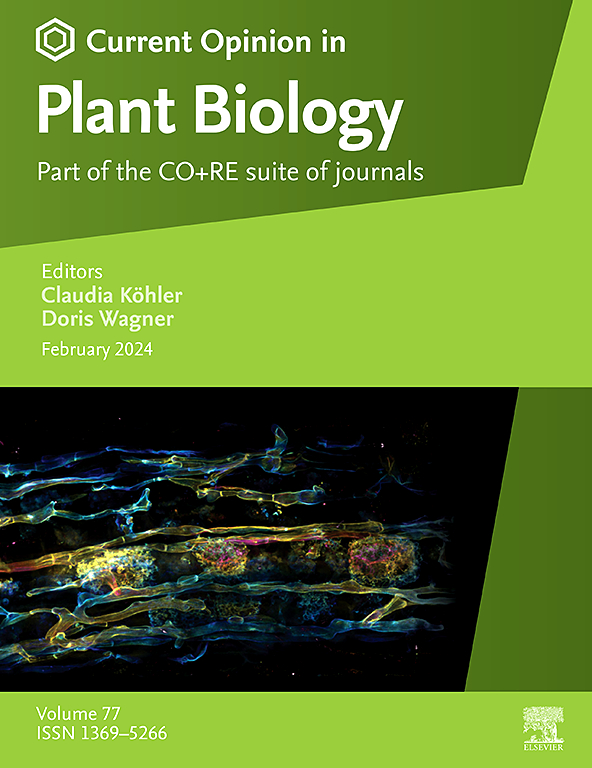Converging on long and short: The genetics, molecular biology and evolution of heterostyly
IF 7.5
2区 生物学
Q1 PLANT SCIENCES
引用次数: 0
Abstract
Heterostyly is a fascinating floral polymorphism that enhances outcrossing. In heterostylous species the flowers of the two or three morphs differ in multiple traits, including reciprocal reproductive-organ placement and self-incompatibility. These traits are controlled by individual genes within an S-locus supergene, whose suppressed recombination ensures the coordinated inheritance of the morph phenotypes. Recent breakthroughs about the genetic and molecular basis of heterostyly have resulted from studies on many independently evolved instances and include the following: The S-locus is a hemizygous region comprising several individual genes in multiple heterostylous taxa. In many systems, a single gene within the S-locus plays dual roles in regulating both female traits of style length and self-incompatibility type, often involving brassinosteroid signalling. The S-loci have evolved through stepwise or segmental duplication in different lineages. The frequent breakdown of heterostyly generally results from individual mutations at the S-locus and leads to a genomic selfing syndrome. These discoveries suggest convergent and genetically constrained evolution of heterostyly at the molecular level.
向长与短趋同:异花柱的遗传学、分子生物学和进化
异质花柱是一种迷人的花型多态性,可以增强异交。在异花柱种中,两种或三种形态的花在许多性状上不同,包括生殖器官的相互位置和自交不亲和。这些性状由s位点超基因内的单个基因控制,其抑制重组确保了形态表型的协调遗传。近年来,对异花柱的遗传和分子基础的研究取得了新的突破,包括:s位点是由多个异花柱分类群中的几个单独基因组成的半合子区域。在许多系统中,s位点内的单个基因在调节花柱长度和自交不亲和型的雌性性状中起双重作用,通常涉及油菜素内酯信号。s基因座在不同的世系中通过逐步或分段重复进化而来。异花柱的频繁破裂通常是由s位点的个体突变引起的,并导致基因组自交综合征。这些发现表明异花柱在分子水平上的趋同进化和遗传约束进化。
本文章由计算机程序翻译,如有差异,请以英文原文为准。
求助全文
约1分钟内获得全文
求助全文
来源期刊

Current opinion in plant biology
生物-植物科学
CiteScore
16.30
自引率
3.20%
发文量
131
审稿时长
6-12 weeks
期刊介绍:
Current Opinion in Plant Biology builds on Elsevier's reputation for excellence in scientific publishing and long-standing commitment to communicating high quality reproducible research. It is part of the Current Opinion and Research (CO+RE) suite of journals. All CO+RE journals leverage the Current Opinion legacy - of editorial excellence, high-impact, and global reach - to ensure they are a widely read resource that is integral to scientists' workflow.
 求助内容:
求助内容: 应助结果提醒方式:
应助结果提醒方式:


